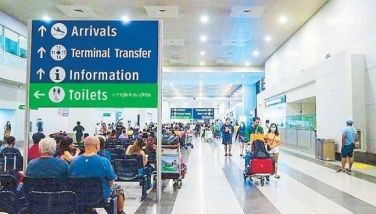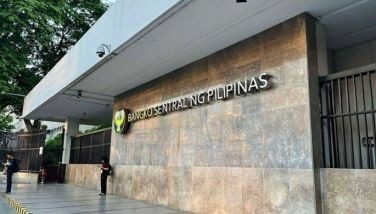Philippine manufacturing recovers in Oct, leads growth in ASEAN
MANILA, Philippines — The local manufacturing sector recovered strongly in October after two months of marginal growth to lead the ASEAN region anew, according to the latest reading of the Nikkei Manufacturing Purchasing Managers’ Index (PMI).
The Nikkei Philippine Manufacturing PMI rose to 53.7 in October from 50.8 in September, reflecting a pickup in the improvement of business conditions as a reading below 50 indicates worsening business conditions.
IHS Markit, the firm that collected data for the index, said local manufacturers recorded faster increases in new orders, prompting them to hike purchases of input and hire new workers to fulfill orders.
Export sales grew moderately, leaving domestic demand the key source of growth. Matching the pickup in new orders, firms raised production volumes at the fastest rate since June, said IHS Markit.
Manufacturers, however, continued to feel the pinch of cost inflation because of the weakness of the peso. Materials such as paper, fuel, and industrial metals were particularly expensive. To protect their margins, firms once again hiked selling prices.
“After two months of marginal growth, there was a flurry of activity in the Philippines manufacturing sector at the start of the fourth quarter. Demand for Filipino manufactured goods strengthened noticeably, with order book growth picking up to a five-month high. Greater demand lifted production volumes, which in turn prompted firms to hire more workers,” said IHS Markit economist Bernard Aw.
“Further weakening of the peso poses a problem for manufacturers, especially those that rely on imported inputs for production. Input cost inflation picked up sharply, which led firms to raise prices in order to preserve profit margins. Charges for Filipino goods increased at the fastest rate on record. This signals that inflationary pressures are building in the Philippines, suggesting that consumer inflation may trend above BSP’s inflation expectations. That will compel the central bank to consider tightening monetary policy as early as this year,” he added.
Manufacturing conditions in ASEAN improved slightly in October as export sales rose at a faster pace.
The headline Nikkei ASEAN Manufacturing PMI rose slightly to 50.4 in October from 50.3 in September. Expansions on output and new orders were key drivers of the latest upturn.
Most of the countries covered by the survey registered improvement in business conditions: Philippines, Vietnam, Singapore, Myanmar, and Indonesia. Manufacturing conditions in Thailand and Malaysia, meanwhile, slid to contraction territory.
“PMI data indicated that strengthening demand from abroad was a key source of growth for the sector, contributing to a further rise in overall new business,” said Aw.
“ASEAN goods producers continued to face supply chain delays amid reports of raw material shortages rather than overwhelming demand. This raises concerns that further delays may impact future output. A side effect of supply chain pressures was higher prices. Input cost inflation across the region remained sharp, driven also by weaker exchange rates and rising global commodity prices,” he added.
- Latest
- Trending
























